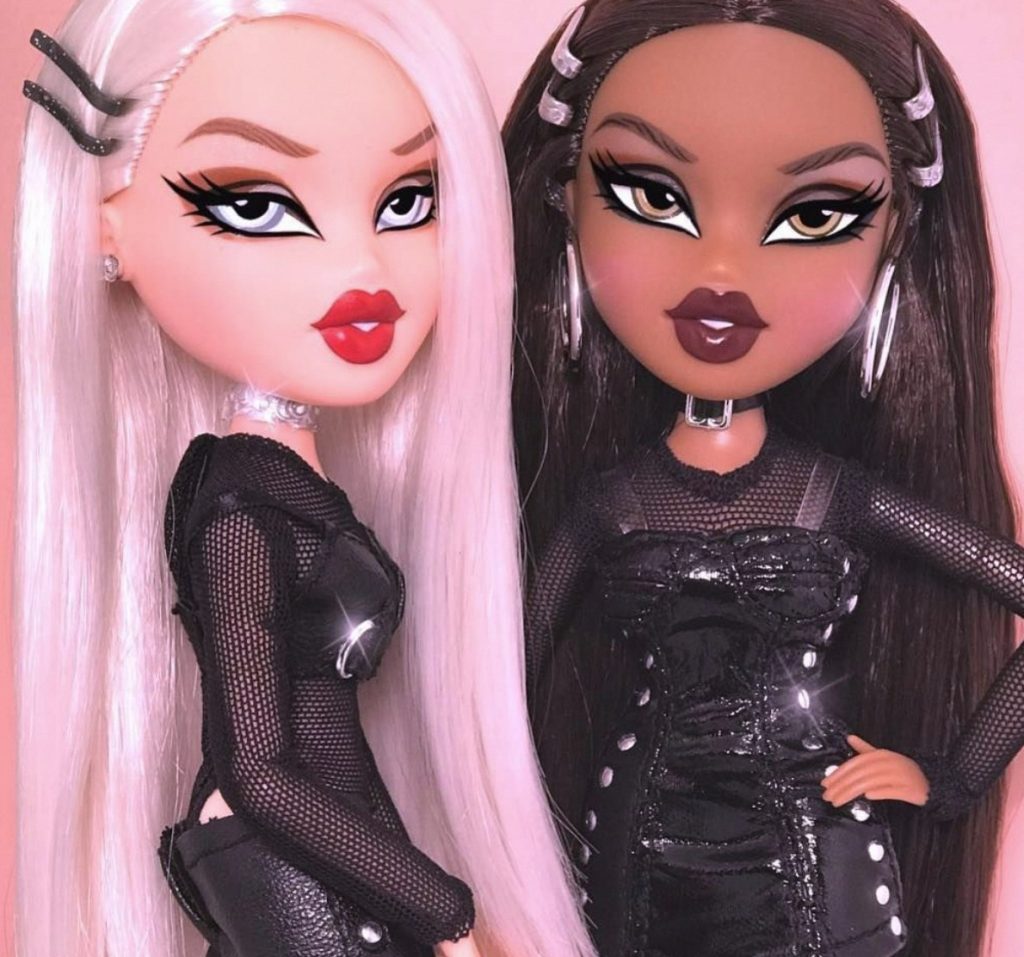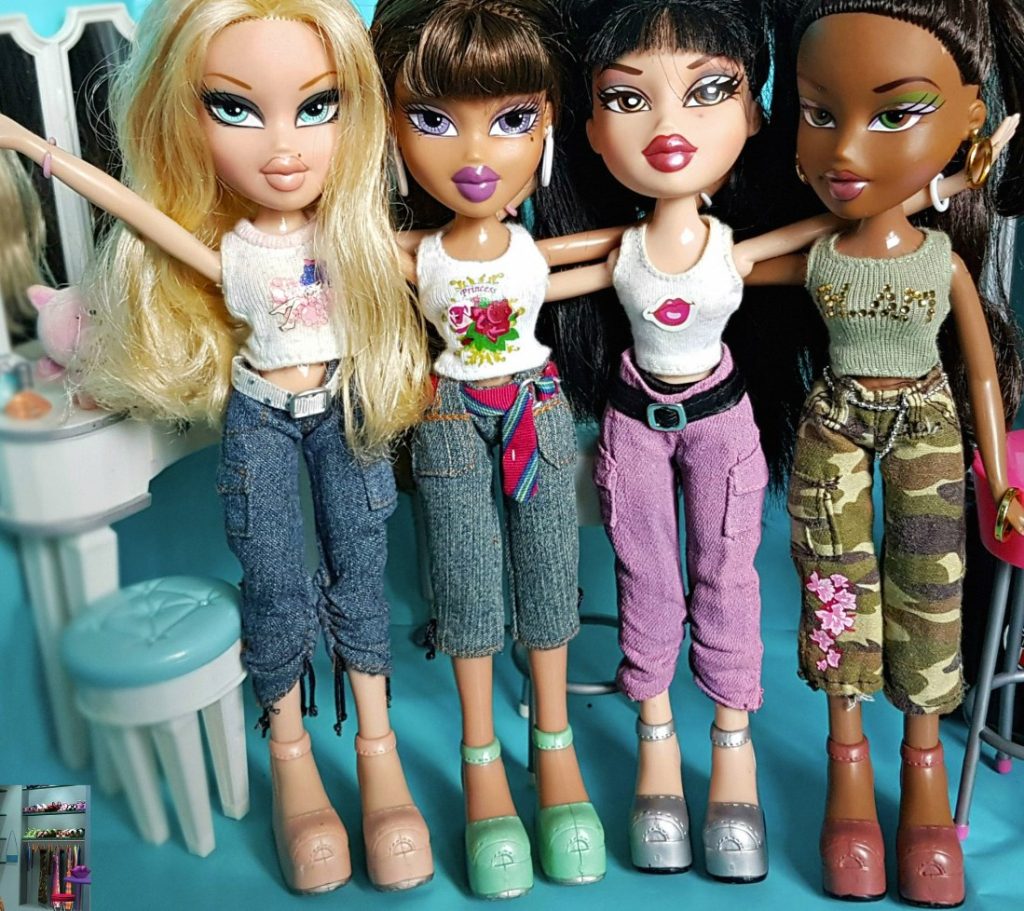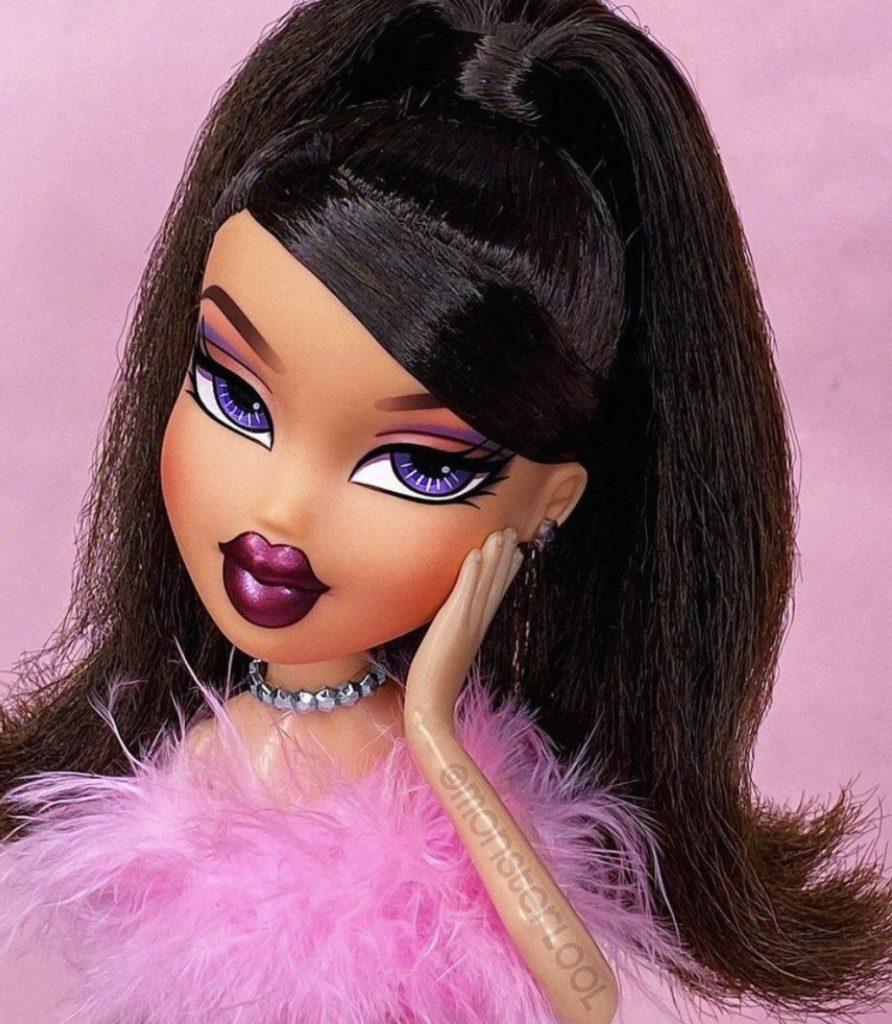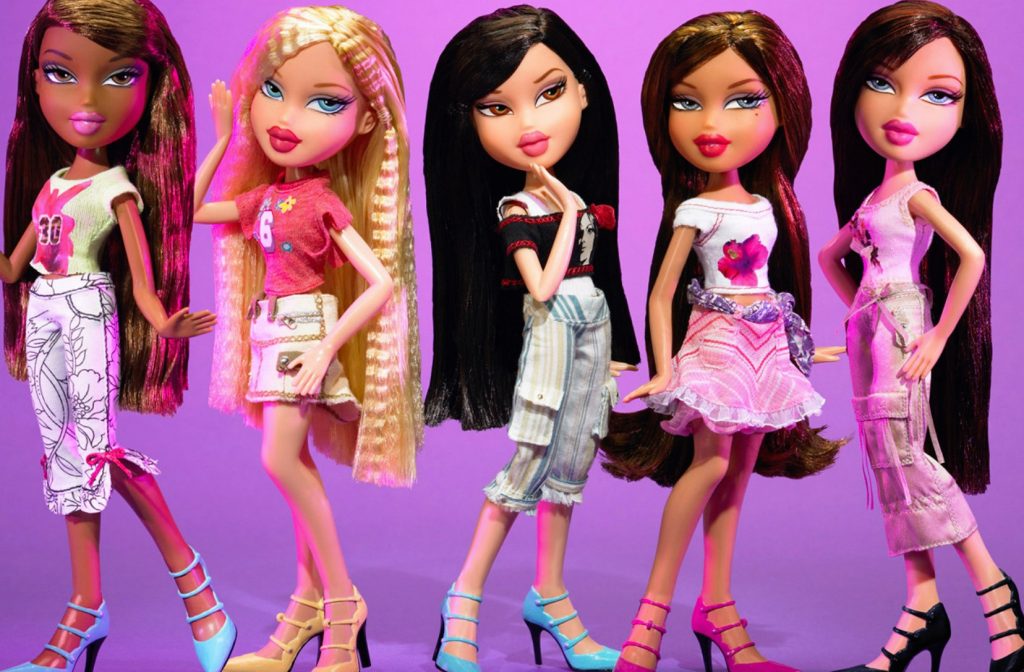Part 1: From Drawing Board to Debut – Challenging the Ideal
A Dissatisfied Designer:
In 2001, Carter Bryant, a former clothing designer for Barbie at Mattel, wasn’t satisfied with the limited representation in the doll aisle. Barbie, the reigning queen of toys, lacked diversity and embodied a narrow definition of beauty. Bryant envisioned a doll line that reflected the multicultural world and celebrated fashion.

Birth of the Bratz Pack:
Carter Bryant conceived the revolutionary and innovative concept for the “Bratz” dolls, deriving it from the slang term “brat,” meaning “flamboyant” or “saucy.” The dolls revolved around the dynamic friendship of four distinctive characters: Yasmin, Jade, Cloe, and Sasha. What set the Bratz apart from other dolls at the time was their unprecedented portrayal of diverse ethnic backgrounds, plump lips, full eyebrows, and trendy Y2K fashion, which was a stark departure from the prevailing image of Barbie dolls with their traditionally perfect features and career-oriented accessories. The introduction of the Bratz dolls challenged the established norms in the toy industry, embracing a fresh and contemporary approach that resonated with young consumers, particularly those seeking representation and a reflection of the diverse world around them.
Part 2: Standing Out in a Crowded Toy Box – Fashion & Friendships
Focus on Fashion:
In contrast to Barbie, whose brand was heavily associated with aspirational careers and classic fashion, Bratz dolls shifted the focus to contemporary style, self-expression, and trend-setting fashion. The dolls’ signature looks encapsulated a diverse and vibrant array of styles inspired by hip-hop, pop culture, and streetwear trends. Embracing bold and cutting-edge fashion choices, Bratz dolls showcased an eclectic wardrobe that included everything from tiny Fendi bags to funky platform sneakers, reflecting the latest in urban fashion and global culture. Their ensembles celebrated individuality and creativity, appealing to young girls who sought to express themselves through fashion. By providing such a diverse range of styles, Bratz dolls offered an alternative perspective on fashion and personal expression, resonating with a generation of children who were eager to embrace unique and individualized styles.

Friendship Over Competition:
The portrayal of the Bratz dolls as a tight-knit group of friends was unique. They bonded over their shared love for fashion and celebrated each other’s individuality. This was a refreshing departure from the traditional narrative of rivalry often seen in the doll market. In a landscape where dolls were typically depicted as competitors or rivals, the emphasis on friendship and solidarity among the Bratz characters stood out. This powerful message resonated strongly, particularly with a generation of young girls who were seeking a sense of belonging and genuine connections. The Bratz ethos centered around the notion that it’s cool to be different and to celebrate the unique styles and personalities of friends. It offered a compelling and relatable message to their audience.
Part 3: Expanding the Bratz World – Beyond the Dolls
A Multifaceted Brand:
The Bratz brand quickly transcended the realm of traditional dolls, expanding into a multi-platform entertainment franchise. Beyond the dolls themselves, the introduction of animated movies, video games, music CDs, and clothing lines featured the beloved Bratz characters. This provided fans with diverse and immersive ways to engage with the brand. The multimedia approach not only diversified the brand’s offerings but also created a deeper connection between fans and the characters they idolized. This expansion beyond traditional doll play not only boosted overall sales but also solidified Bratz as a cultural phenomenon that resonated with a wide audience. The brand’s ability to seamlessly navigate multiple forms of media while maintaining its core values of empowerment, diversity, and self-expression contributed to its enduring impact and popularity.

Controversy and Lawsuits:
Bratz’s meteoric success was not without its challenges. MGA Entertainment, the manufacturer of Bratz, found itself embroiled in a protracted legal battle with Mattel, the creator of Barbie. Mattel filed lawsuits against MGA Entertainment, alleging copyright infringement and claiming that the Bratz dolls had been created by a designer who was previously employed by Mattel. These legal disputes had significant ramifications, lasting for several years and creating a substantial impact on both companies. The litigations had a considerable effect on Bratz’s momentum, leading to disruptions in production, distribution, and marketing efforts. The legal wrangling between the two toy companies not only generated substantial legal costs but also cast a shadow over the Bratz brand, causing uncertainty for the future of the popular dolls. Despite these challenges, Bratz ultimately persevered and maintained its status as a beloved and influential cultural phenomenon.
Part 4: A Lasting Legacy – Diversity and Self-Expression
A Shift in the Toy Industry:
Despite the prolonged and contentious legal battles, the impact of Bratz dolls on the toy industry remained undeniable. Bratz dolls played a pivotal role in challenging the status quo and reshaping the narrative of dolls in the market. Their emphasis on diversity, individuality, and self-expression represented a significant departure from traditional beauty standards perpetuated by other doll lines. Bratz provided a range of dolls showcasing diverse ethnicities, styles, and personalities, exemplifying inclusivity and authenticity. This approach resonated with a multicultural and increasingly globalized society. The unprecedented approach pioneered a new era in toy representation, fostering a space for children to explore and celebrate their unique identities. The influence of Bratz dolls reverberated throughout the industry, inspiring the creation of a wider array of dolls that better reflected the complex and diverse world in which children live.

A Return and Reimagining:
After a period of declining popularity, Bratz dolls have experienced a remarkable resurgence in recent years. MGA Entertainment, the creator of Bratz, has revitalized the brand. They reintroduced the dolls with updated aesthetics and modernized storylines. The aim is to ensure that the message of inclusivity and individuality continues to resonate with a new generation of consumers. The relaunch of Bratz has rekindled the interest of existing fans and captured the attention of a new audience. The updated looks and storylines reflect the ever-changing cultural landscape and cater to the evolving tastes of today’s children. They also stay true to the core principles of diversity and empowerment that have defined the Bratz brand. By adapting to contemporary trends and social dynamics, MGA Entertainment has successfully reinvigorated Bratz. They are now positioned to once again inspire and empower a new era of young fans.

The Bratz dolls’ evolution is a story of challenging norms. It’s also a story of celebrating self-expression and leaving a lasting mark on the toy industry. From their initial debut to their recent resurgence, Bratz dolls have empowered young girls. They have helped them to embrace their unique styles and celebrate the beauty of friendship.


